Intro
Learn about breast cancer biopsy procedures, types, and results. Understand biopsy techniques, diagnosis, and treatment options with our comprehensive Breast Cancer Biopsy Guide, covering mammograms, ultrasounds, and MRI scans for accurate detection and care.
Breast cancer is one of the most common types of cancer affecting women worldwide. Early detection and diagnosis are crucial for effective treatment and improving survival rates. A breast cancer biopsy is a diagnostic procedure that involves removing a small sample of breast tissue to examine for cancer cells. This guide aims to provide a comprehensive overview of the breast cancer biopsy process, its importance, and what to expect during and after the procedure.
The importance of breast cancer biopsies cannot be overstated. They are the most accurate way to diagnose breast cancer, allowing doctors to determine the presence, type, and extent of cancer. This information is vital for developing an effective treatment plan, which may include surgery, chemotherapy, radiation therapy, or a combination of these. Furthermore, breast cancer biopsies can also help identify genetic markers, such as HER2 and estrogen receptor status, which can influence treatment decisions.
Breast cancer biopsies are typically recommended when a lump or abnormality is detected during a breast self-exam, clinical breast exam, or imaging tests like mammograms, ultrasounds, or MRIs. While most breast lumps are benign, a biopsy is necessary to confirm the presence of cancer. The procedure is relatively quick and can be performed under local anesthesia, minimizing discomfort and allowing patients to return to their normal activities soon after.
Types of Breast Cancer Biopsies
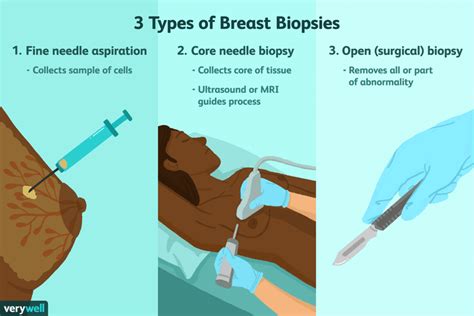
There are several types of breast cancer biopsies, each with its own advantages and indications. The choice of biopsy method depends on the size and location of the abnormality, as well as the patient's overall health. The main types of breast cancer biopsies include fine-needle aspiration biopsy, core needle biopsy, and surgical biopsy.
Fine-Needle Aspiration Biopsy
Fine-needle aspiration biopsy involves using a thin needle to remove a small sample of cells from the breast lump. This method is quick and relatively painless, but it may not provide enough tissue for a definitive diagnosis. Fine-needle aspiration biopsies are often used for smaller lumps or when a core needle biopsy is not feasible.Core Needle Biopsy
Core needle biopsy uses a slightly larger needle to remove a small cylinder of tissue from the breast. This method provides more tissue than fine-needle aspiration and is often used for larger lumps or when a fine-needle aspiration biopsy is inconclusive. Core needle biopsies can be performed under local anesthesia and usually take about 30 minutes to complete.Surgical Biopsy
Surgical biopsy, also known as open biopsy or excisional biopsy, involves surgically removing the entire lump or a larger portion of breast tissue. This method is typically used when other biopsy methods are not feasible or when a diagnosis cannot be made with a core needle biopsy. Surgical biopsies are usually performed under general anesthesia and may require a longer recovery time.Preparation and Procedure
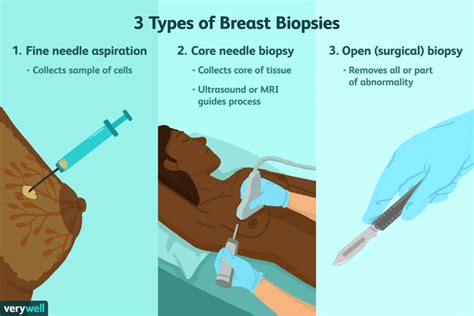
Preparation for a breast cancer biopsy typically involves avoiding aspirin and other blood-thinning medications for a few days before the procedure. Patients may also be asked to wear a comfortable bra and loose clothing to facilitate the biopsy process. The procedure itself usually takes about 30 minutes to an hour, depending on the type of biopsy and the number of samples taken.
During the procedure, the patient will be positioned on an examination table, and the breast will be cleaned and numbed with local anesthesia. The doctor will then insert the biopsy needle or make a small incision, depending on the type of biopsy. The patient may feel some pressure or discomfort during the procedure, but this is usually minimal.
What to Expect After the Biopsy
After the biopsy, the patient will be taken to a recovery area to rest for about 30 minutes to an hour. The breast may feel sore or tender, and there may be some bruising or swelling. Over-the-counter pain medications, such as acetaminophen or ibuprofen, can help alleviate any discomfort. Patients are usually advised to avoid strenuous activities, such as heavy lifting or exercise, for a few days after the procedure.Understanding the Results
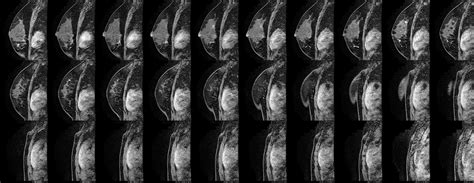
The biopsy results are usually available within a few days to a week after the procedure. The results will indicate whether the breast tissue sample contains cancer cells and, if so, what type of cancer it is. The most common types of breast cancer include ductal carcinoma, lobular carcinoma, and inflammatory breast cancer.
If the biopsy results are positive for cancer, the patient will be referred to a breast cancer specialist, such as a medical oncologist or a surgical oncologist, to discuss treatment options. The treatment plan will depend on the type and stage of cancer, as well as the patient's overall health and preferences.
Genetic Testing and Biomarkers
In addition to diagnosing breast cancer, biopsy results can also provide information on genetic markers, such as HER2 and estrogen receptor status. These biomarkers can help predict how the cancer will respond to certain treatments and can influence treatment decisions.Risks and Complications
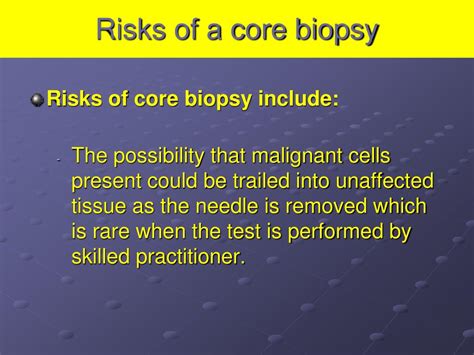
As with any medical procedure, there are risks and complications associated with breast cancer biopsies. These may include bleeding, infection, and bruising or swelling at the biopsy site. In rare cases, the biopsy needle may miss the abnormality, requiring a repeat biopsy.
To minimize the risks, it is essential to follow the doctor's instructions before and after the procedure. Patients should also report any signs of infection, such as redness, warmth, or increased pain, to their doctor promptly.
Minimizing Discomfort and Anxiety
Breast cancer biopsies can be a source of anxiety and stress for patients. To minimize discomfort and anxiety, patients can take several steps, including asking questions and seeking support from family and friends. Patients can also ask about relaxation techniques, such as deep breathing or meditation, to help manage anxiety during the procedure.Conclusion and Next Steps
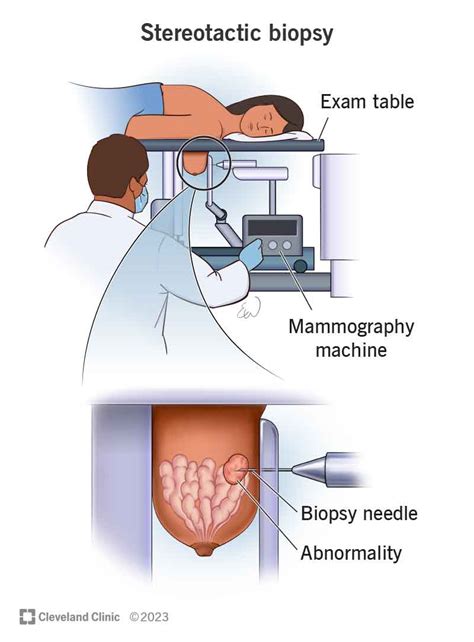
In conclusion, breast cancer biopsies are a crucial diagnostic tool for detecting and diagnosing breast cancer. By understanding the different types of biopsies, the preparation and procedure, and the potential risks and complications, patients can make informed decisions about their care. If you or a loved one has been diagnosed with breast cancer, it is essential to seek support from a breast cancer specialist and to ask questions about the diagnosis and treatment options.
We invite you to comment below with any questions or concerns you may have about breast cancer biopsies. You can also share this article with friends and family to help raise awareness about the importance of breast cancer screening and diagnosis.
What is a breast cancer biopsy?
+A breast cancer biopsy is a diagnostic procedure that involves removing a small sample of breast tissue to examine for cancer cells.
What are the different types of breast cancer biopsies?
+The main types of breast cancer biopsies include fine-needle aspiration biopsy, core needle biopsy, and surgical biopsy.
What can I expect during a breast cancer biopsy?
+During a breast cancer biopsy, you will be positioned on an examination table, and the breast will be cleaned and numbed with local anesthesia. The doctor will then insert the biopsy needle or make a small incision, depending on the type of biopsy.
